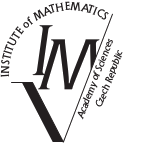Tutorial Track
S. Müller: Determinacy, Large Cardinals, and Inner Models
The study of inner models was initiated by Gödel’s analysis of the constructible universe. Later, the study of canonical inner models with large cardinals, e.g., measurable cardinals, strong cardinals or Woodin cardinals, was pioneered by Jensen, Mitchell, Steel, and others. Around the same time, the study of infinite two-player games was driven forward by Martin’s proof of analytic determinacy from a measurable cardinal, Borel determinacy from ZFC, and Martin and Steel’s proof of levels of projective determinacy from Woodin cardinals with a measurable cardinal on top. First Woodin and later Neeman improved the result in the projective hierarchy by showing that in fact the existence of a countable iterable model, a mouse, with Woodin cardinals and a top measure suffices to prove determinacy in the projective hierarchy. This opened up the possibility for an optimal result stating the equivalence between local determinacy hypotheses and the existence of mice in the projective hierarchy. This tutorial outlines the main concepts and results connecting determinacy hypotheses with the existence of mice with large cardinals as well as recent progress in the area, assuming only basic set theoretic background.
slides I, slides II, slides IIIJ. Steprans: An introduction to some aspects of P-points and related ultrafilters
P-points were originally studied in the context of maximal ideals of rings of continuous functions on various topological spaces, but they have proven to be useful in various applications. Very early results showed that the P-points in the specific space $\beta \mathbb N\setminus \mathbb N$ have a very nice combinatorial characterization as a certain class of ultrafilters on $\mathbb N$. Further study has revealed various alternate characterizations, some of which will be examined in the first lecture. This introductory lecture will also discuss various methods of constructing P-points and related ultrafilters.
The second lecture will examine the forcing arguments needed to create models of set theory without any P-points, while the final lecture will discuss methods for killing some P-points while preserving others. Many questions in this are remain open and I will try to present some of them along with the context for asking them.
The first lecture will not assume any knowledge beyond elementary mathematics. The last two lectures will assume some more sophisticated knowledge of set theory, of the type that is usually covered in an introductory graduate course on set theory.
slides I, slides IIZ. Vydnyánszky: Complexity and Borel Combinatorics
The first lecture will be an introduction to Borel combinatorics, with defining the basic concepts and showing some of the most important examples of Borel graphs. Then, I will discuss how can one use results about projective complexity to refute conjectures, and I will outline proofs of the theorems which describe the complexity of deciding the existence of Borel colorings and homomorphism problems.
The tutorial will be accessible without prior familiarity with Borel combinatorics or projective sets.
lecture notesA. Zucker: Big Ramsey degrees, structures, and related dynamical phenomena
In the past decade, rapid progress has been made in the understanding of big Ramsey degrees, namely, how much infinite Ramsey theory do various countable, ultrahomogeneous structures satisfy? In particular, by work of Balko, Chodounský, Dobrinen, Hubička, Konečný, Vena, and myself, we now have a complete understanding of the situation for Fraïssé limits of finitely constrained binary free amalgamation classes, i.e. graph-like structures which forbid a specified finite list of clique-like substructures.
In the setting of small Ramsey degrees, works of Kechris--Pestov--Todorčević, Nguyen Van Thé, and myself connect this combinatorial property of a Fraïssé class to dynamical properties of the automorphism group of the Fraïssé limit. This tutorial will survey this connection, discuss recent progress in big Ramsey degrees, and explore the possible connections of big Ramsey degrees to dynamical phenomena.
slides I, slides II, slides IIIResearch Track
Scientific committee
David Chodounský, Institute of Mathematics, Czech Academy of Sciences
Jan Grebík, Mathematics Institute, University of Warwick
Chris Lambie-Hanson, Institute of Mathematics, Czech Academy of Sciences
Jan Grebík, Mathematics Institute, University of Warwick
Chris Lambie-Hanson, Institute of Mathematics, Czech Academy of Sciences

